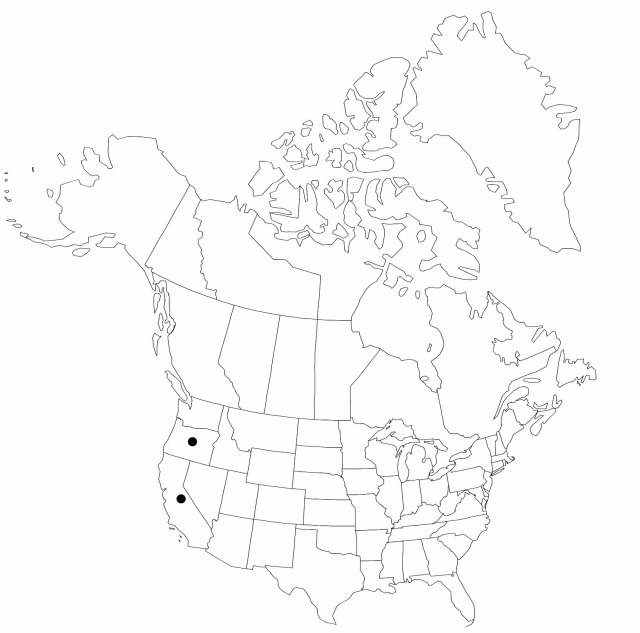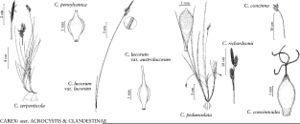Carex serpenticola
Madroño 45: 261, figs. 1, 2, 3S. 1998.
Plants loosely cespitose or with solitary stems; rhizomes horizontal, purple to black, 25–75(–100) mm, slender. Culms 8–38 cm; bases (remnants of old leaves) weakly to strongly fibrous. Leaf blades green, 1.5–3.5(–5) mm wide, herbaceous, smooth to scabrous abaxially, smooth to scabrous adaxially. Inflorescences usually with either staminate or pistillate spikes, occasionally with both; peduncles of staminate spikes short; proximal nonbasal bracts leaflike, dark purple to black at base, shorter than inflorescences. Spikes: proximal pistillate spikes 1–4 (basal spikes 0–1); cauline spikes overlapping or somewhat separted, with 4–9 perigynia; staminate spikes 13–24 × (1.4–)2–4.1 mm. Scales: pistillate scales dark purple to black, with narrow white margins, lanceolate, 3.8–4.6 × 1.3–1.8 mm, apex acuminate; staminate scales oblanceolate, 4.6–5.6 × 1.1–1.6 mm, apex acute; proximal staminate scales with narrow white margins 0.1–0.2 mm wide. Anthers 2.1–4 mm. Perigynia green, occasionally dark purple in age, veinless or 5-veined near base, obovoid, 3.1–3.6 × 1.5–1.8 mm; beak slightly bent, dark purple, 0.5–1 mm, weakly ciliate-serrulate, apical teeth 0.2 mm. Stigmas 3. Achenes pale to medium brown, globose, round in cross section, 1.9–2.2 × 1.4–1.8 mm.
Phenology: Fruiting mid Apr–mid Jun.
Habitat: Open or partly shaded, vernally moist to wet meadows, riparian woodlands, savannas, successional scrublands, wetland margins, serpentine soils derived from ultramafic bedrock
Elevation: 60–1200 m
Distribution

Calif., Oreg.
Discussion
Selected References
None.
